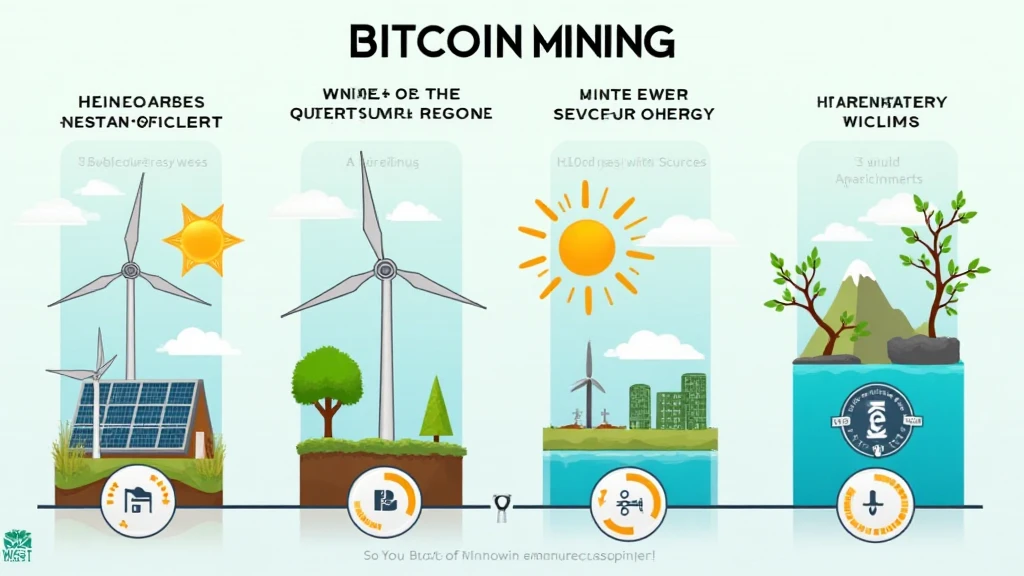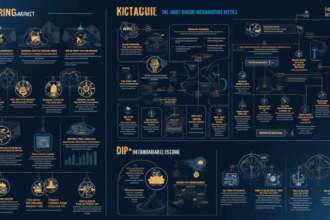Introduction
As the world increasingly moves towards digital currencies, Bitcoin mining has become a significant topic of discussion due to its high energy consumption. In 2024 alone, Bitcoin mining was reported to consume approximately 90 terawatt-hours (TWh) of electricity, raising concerns about its environmental impact. So, how can we make Bitcoin mining more sustainable? In this article, we will examine various energy sources for Bitcoin mining, their efficiencies, and potential for a greener future.
Understanding Bitcoin Mining Energy Consumption
Bitcoin mining is the process by which new Bitcoins are created and transactions are verified on the blockchain. This process requires immense computational power and, consequently, large amounts of energy. The question many are asking is: What energy sources are currently powering Bitcoin mining operations?
Electricity Consumption in Bitcoin Mining
- Bitcoin mining requires computational power, which translates to high electricity costs.
- The majority of Bitcoin mining is concentrated in areas with cheap electricity.
- Countries with abundant renewable energy resources are becoming hotspots for Bitcoin mining.
The Role of Renewable Energy in Bitcoin Mining
Transitioning to renewable energy sources is crucial for reducing the environmental impact of Bitcoin mining. Let’s break down some of the primary renewable energy sources being utilized in this sector.

Solar Power
Solar energy is a rapidly growing source of power for Bitcoin miners. The key benefits of solar power include:
- Reducing reliance on fossil fuels, which are the primary energy sources in many regions.
- Providing a stable, long-term energy cost for mining operations.
- Promoting a sustainable approach by harnessing free and abundant sunlight.
Hydropower
Hydropower is considered one of the most efficient renewable energy sources for Bitcoin mining. Here’s why:
- It’s available in large quantities in certain geographical regions, making it ideal for scalability.
- Hydroelectric plants can produce electricity at a lower cost compared to fossil fuels.
- Countries like Vietnam are exploring hydropower as a primary source for the crypto industry.
Wind Power
Wind energy is another renewable resource being harnessed for Bitcoin mining. The advantages are significant:
- Wind farms can produce clean energy with a minimal carbon footprint.
- Energy production is often highest at times when electricity demand is low, aligning perfectly with mining operations.
- Countries with strong wind resources are paving the way for future mining operations.
Efficiency and Economic Implications
The economic implications of using renewable energy sources for Bitcoin mining are essential to consider:
- Investing in renewable energy can lead to significant cost savings in electricity expenses.
- Regulatory frameworks in regions like Vietnam encourage cleaner mining practices, potentially leading to lower taxes.
- Green energy can enhance brand reputation among environmentally conscious investors.
Case Studies: Successful Mining Operations Using Renewable Energy
Here are a few examples of mining operations leveraging renewable energy:
- Genesis Mining: This operation uses a mix of hydropower and solar energy to reduce its carbon footprint successfully.
- Hut 8 Mining Corp: Utilizes a combination of clean power sources, achieving efficiencies while reducing reliance on fossil fuels.
- Bitmain: The world’s largest Bitcoin mining hardware manufacturer invests heavily in renewable energy projects.
Looking Ahead: The Future of Bitcoin Mining
As Bitcoin mining continues to evolve, the shift toward sustainable energy sources will be crucial. By 2025, Bitcoin mining regulations could severely limit carbon dioxide emissions, emphasizing the critical need for renewable energy integration. For the Vietnamese market, the growth of digital assets is expected to surge, potentially increasing the demand for sustainable mining practices. Local initiatives that support green energy will play a significant role in ensuring the industry’s future viability.
Conclusion
In summary, adopting renewable energy sources for Bitcoin mining is not just a trend; it’s a necessity. As the energy requirements for mining grow, so does the imperative to find cleaner alternatives to traditional power sources. The future of Bitcoin mining can, and should, integrate sustainable solutions like solar, wind, and hydropower to mitigate its environmental impact. By embracing these changes, players in the crypto industry can align with global climate goals and enhance economic stability. Explore more about Bitcoin mining energy sources at bitcryptodeposit, and join the movement towards a more sustainable future in the cryptocurrency space!







